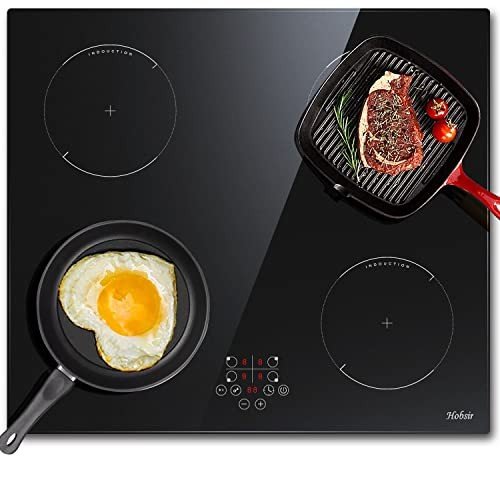20 Fun Facts About Oven And Hob
Understanding Kitchen Ovens and Hobs: A Comprehensive Guide
The kitchen is typically referred to as the heart of the home, and for great reason. It is where households come together, meals are prepared, and memories are created. Central to this culinary haven are two essential home appliances: the kitchen oven and the hob. Understanding their features, types, and functionalities is important for effective cooking and can significantly improve a home chef's experience. This post will look into the world of kitchen ovens and hobs, examining their different types, advantages, and suggestions for making informed choices.
Table of Contents
- Introduction to Kitchen Ovens
- Kinds of Ovens
- Traditional Ovens
- Convection Ovens
- Microwave Ovens
- Steam Ovens
- Comprehending Hobs
- Types of Hobs
- Gas Hobs
- Electric Hobs
- Induction Hobs
- Advantages of Using Ovens and Hobs
- Choosing the Right Oven and Hob for Your Kitchen
- Maintenance Tips for Ovens and Hobs
- Frequently asked questions
- Conclusion
1. Intro to Kitchen Ovens
Ovens are indispensable home appliances in modern cooking areas. They supply a regulated environment for baking, roasting, and broiling food. With various styles and performances, picking the ideal oven can considerably affect cooking times, food texture, and flavor.
2. Kinds of Ovens
Conventional Ovens
Conventional ovens are the most common type found in homes. They use either electric or gas power to heat the interior and normally include a single cooking space.
Advantages:
- Versatile for baking, roasting, and broiling.
- Usually cost effective.
Convection Ovens
Convection ovens resemble traditional ovens however come equipped with a fan that distributes hot air throughout the cooking chamber. Built In Oven Online results in even cooking and browning.
Benefits:
- Reduced cooking times due to improved airflow.
- Enhanced browning and crisping of foods.
Microwave Ovens
Microwave utilize electro-magnetic radiation to heat food rapidly, making them convenient for defrosting and reheating leftovers.
Benefits:
- Very fast cooking times.
- Energy efficient.
Steam Ovens
Steam ovens use steam to cook, preserving the wetness and nutrients in food. They are particularly popular among health-conscious cooks.
Advantages:
- Healthier cooking option.
- Keeps vitamins and minerals in food.
3. Comprehending Hobs
Hobs, also known as cooktops, are the flat surfaces on which pots and pans are positioned to prepare food. They can be integrated into kitchen countertops and are available in numerous designs, fuel types, and designs.
4. Types of Hobs
Gas Hobs
Gas hobs use burner as their heat source, using immediate heat and accurate temperature control.
Advantages:
- Excellent control over cooking heat.
- Generally cheaper to run than electric ones.
Electric Hobs
Electric hobs heat utilizing electric coils or glass surfaces. They may take longer to warm up than gas, however they offer a smooth cooking surface and are simpler to clean up.
Advantages:
- Even heat distribution.
- Safe, as there's no open flame.
Induction Hobs
Induction hobs utilize electromagnetic energy to straight heat up pots and pans. They require compatible cookware and deal instant responsiveness.
Benefits:
- Highly energy-efficient.
- Faster cooking times and accurate temperature level control.
5. Benefits of Using Ovens and Hobs
Both ovens and hobs included their own distinct set of benefits that can boost any cooking experience. Here are a few crucial advantages:
- Diverse Cooking Options: Both home appliances permit for a variety of cooking approaches consisting of boiling, frying, roasting, baking, and steaming.
- Time Efficiency: Modern ovens and hobs frequently include quick cooking settings, which save time in the kitchen.
- Precision Cooking: With sophisticated functions, users can accomplish better lead to temperature control and cooking times.
6. Selecting the Right Oven and Hob for Your Kitchen
When choosing the best oven and hob, various factors ought to be thought about:
- Size: Ensure that the home appliance fits conveniently in your kitchen area.
- Cooking Style: Consider what kinds of food you frequently prepare.
- Fuel Type: Whether gas or electric, think about accessibility and effectiveness in your location.
- Budget plan: Determine your budget and discover devices that satisfy your needs within that variety.
List for Choosing Your Oven and Hob:
- Assess kitchen space.
- Determine your cooking preferences.
- Determine source of power accessibility.
- Compare functions and specifications.
- Set a budget range.
7. Upkeep Tips for Ovens and Hobs
Regular upkeep is essential for keeping ovens and hobs in optimum condition. Here are some maintenance pointers:
- Clean Regularly: Wipe down surfaces after each use and deep tidy occasionally.
- Examine Seals: For ovens, check door seals to guarantee they are airtight.
- Examine Burners: For gas hobs, keep burners free of food debris to maintain efficient heating.
- Change Filters: If your oven has a filter, replace it as suggested by the maker.
8. FAQs
1. What is the distinction between a traditional oven and a convection oven?Conventional ovens
prepare food through glowing heat, while stove circulate hot air, leading to quicker and more even cooking. 2. Do induction hobs require unique cookware?Yes,
induction hobs require ferrous cookware that is capable of being magnetized to work effectively. 3. Are steam ovens worth the investment?For health-conscious people or those who often prepare vegetables and delicate foods, steam ovens can be worth the financial investment
due to their capability to maintain nutrients. 4. Can I integrate an oven and hob into one unit?Yes, lots of makers provide combined units known as variety cookers, which incorporate both an oven
and hob into a single device. 9. Conclusion Kitchen ovens and hobs are essential components of any cooking area, each offering special features and performances suited for various cooking designs.
By understanding the
kinds of ovens and hobs available, their benefits, and how to maintain them, home chefs can cultivate a more effective and enjoyable cooking experience. Whether one is a skilled cook or a beginner, making informed decisions about these essential kitchen appliances is essential. 